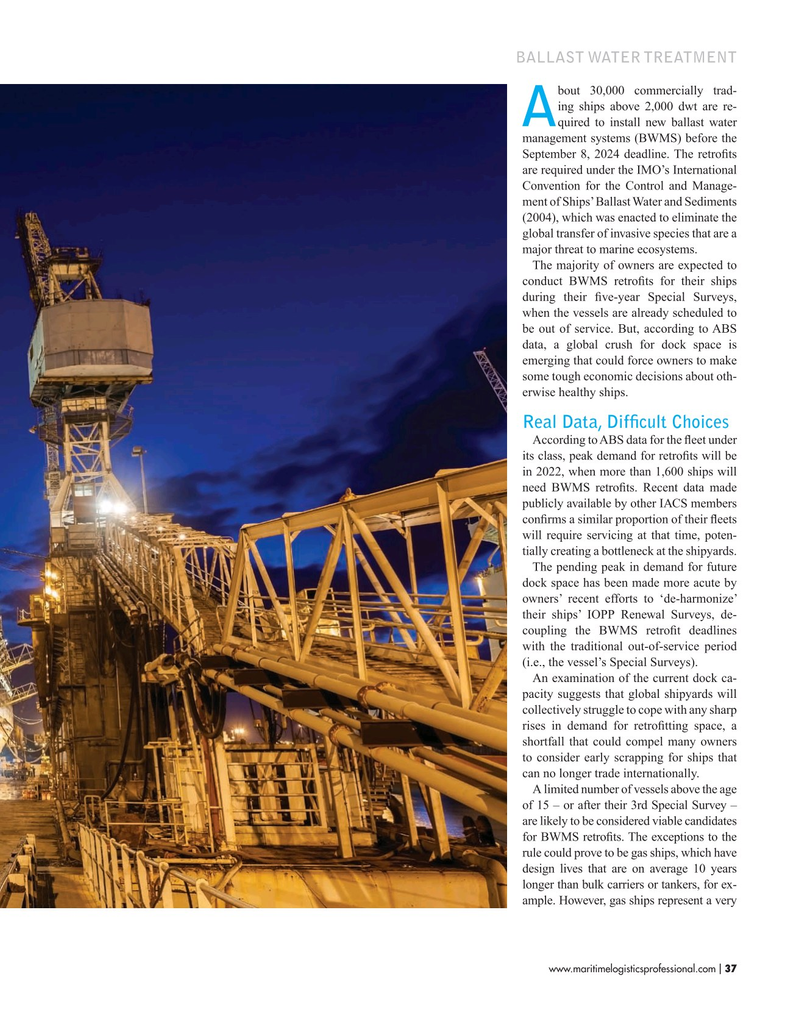
Page 37: of Maritime Logistics Professional Magazine (Nov/Dec 2019)
Short Sea Shipping Ports
Read this page in Pdf, Flash or Html5 edition of Nov/Dec 2019 Maritime Logistics Professional Magazine
BALLAST WATER TREATMENT bout 30,000 commercially trad- ing ships above 2,000 dwt are re-
Aquired to install new ballast water management systems (BWMS) before the
September 8, 2024 deadline. The retrofts are required under the IMO’s International
Convention for the Control and Manage- ment of Ships’ Ballast Water and Sediments (2004), which was enacted to eliminate the global transfer of invasive species that are a major threat to marine ecosystems.
The majority of owners are expected to conduct BWMS retrofts for their ships during their fve-year Special Surveys, when the vessels are already scheduled to be out of service. But, according to ABS data, a global crush for dock space is emerging that could force owners to make some tough economic decisions about oth- erwise healthy ships.
Real Data, Diffcult Choices
According to ABS data for the feet under its class, peak demand for retrofts will be in 2022, when more than 1,600 ships will need BWMS retrofts. Recent data made publicly available by other IACS members confrms a similar proportion of their feets will require servicing at that time, poten- tially creating a bottleneck at the shipyards.
The pending peak in demand for future dock space has been made more acute by owners’ recent efforts to ‘de-harmonize’ their ships’ IOPP Renewal Surveys, de- coupling the BWMS retroft deadlines with the traditional out-of-service period (i.e., the vessel’s Special Surveys).
An examination of the current dock ca- pacity suggests that global shipyards will collectively struggle to cope with any sharp rises in demand for retroftting space, a shortfall that could compel many owners to consider early scrapping for ships that can no longer trade internationally.
A limited number of vessels above the age of 15 – or after their 3rd Special Survey – are likely to be considered viable candidates for BWMS retrofts. The exceptions to the rule could prove to be gas ships, which have design lives that are on average 10 years longer than bulk carriers or tankers, for ex- ample. However, gas ships represent a very www.maritimelogisticsprofessional.com 37
I

 36
36

 38
38
